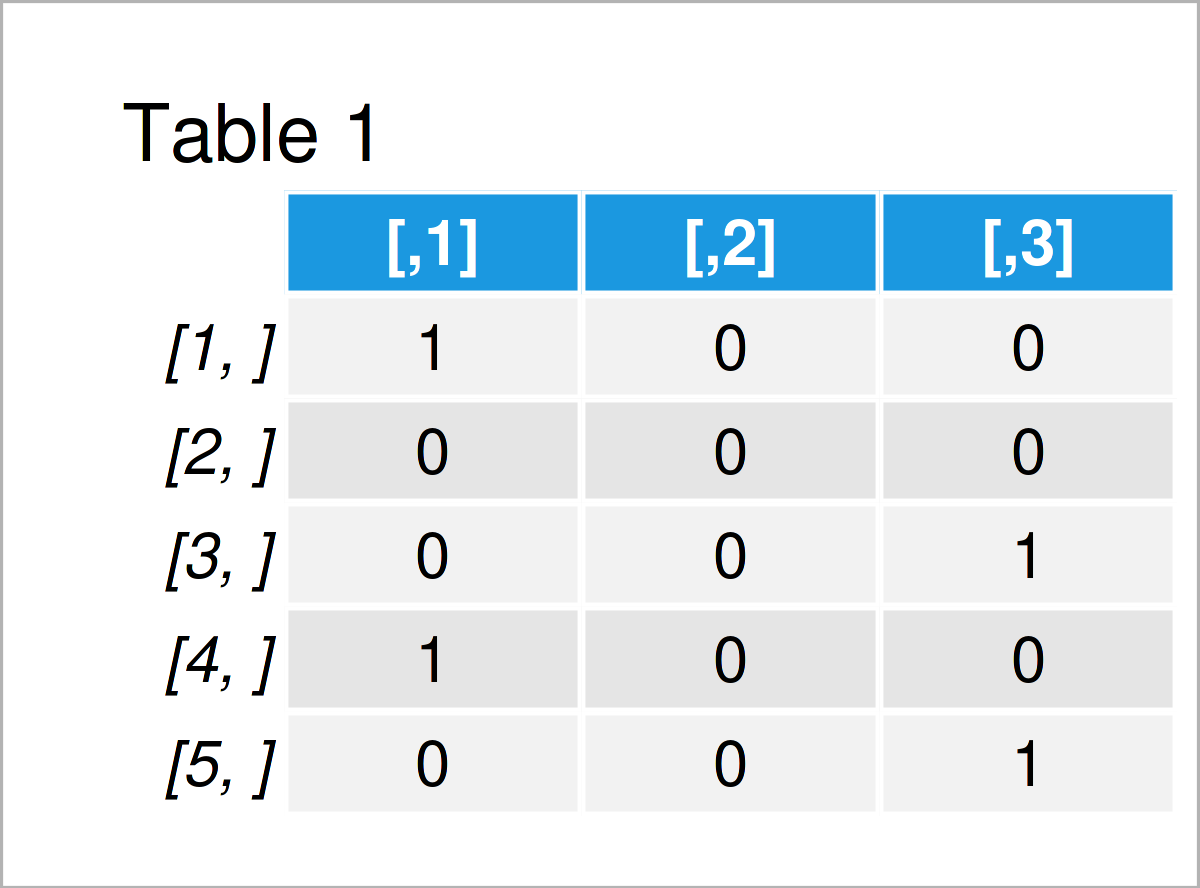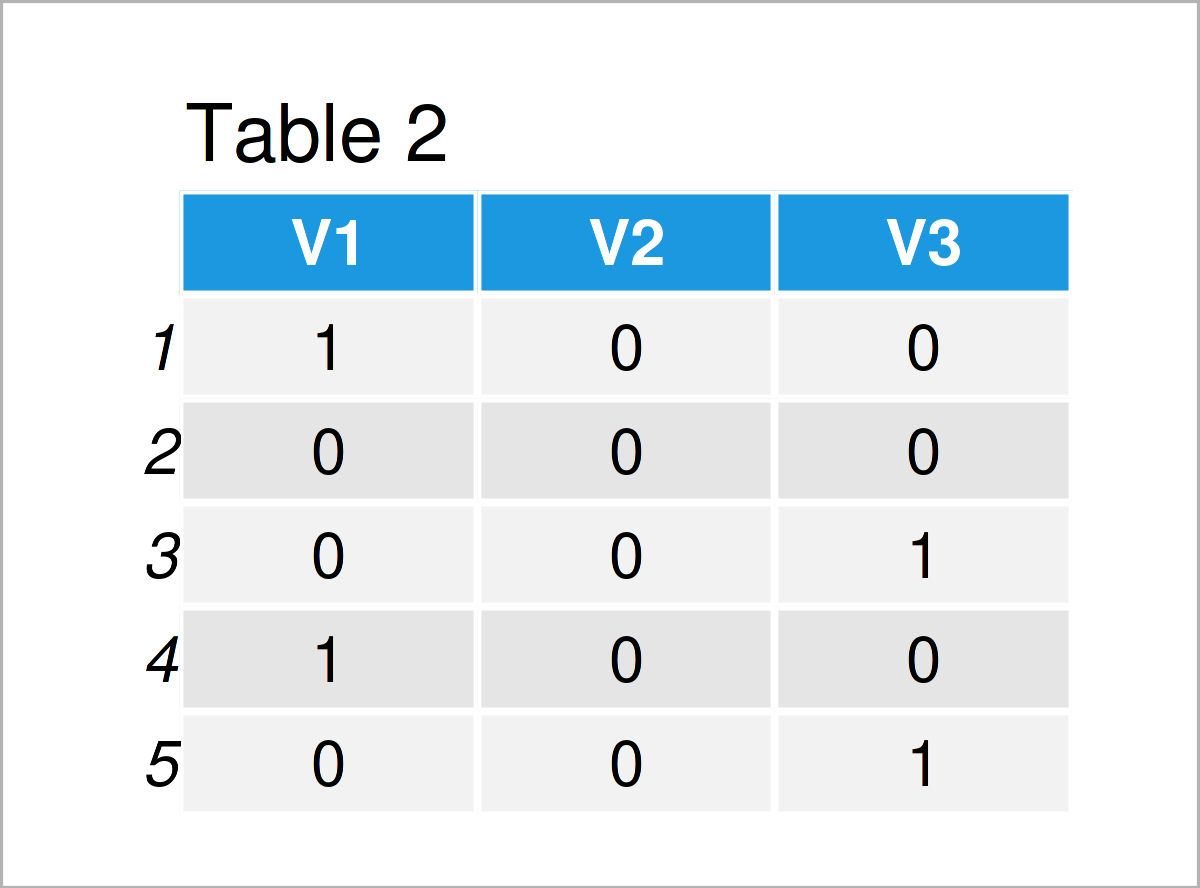Create Dummy Data Frame in R (Example)
This tutorial illustrates how to construct a data frame with dummy variables in R.
The tutorial consists of this:
You’re here for the answer, so let’s get straight to the programming part…
Example: Construct Dummy Data Frame Using rbinom(), matrix() & as.data.frame() Functions
The following R syntax shows how to create a data frame containing multiple dummy variables in R.
We first need to set a random seed to make this example reproducible:
set.seed(2867754) # Set seed for reproducibility
Next, we can use the rbinom function to generate a random dummy vector:
dummy_vec <- rbinom(15, 1, prob = 0.3) # Create dummy vector dummy_vec # Print dummy vector # [1] 1 0 0 1 0 0 0 0 0 0 0 0 1 0 1
In the next step, we can convert this dummy vector to a matrix:
dummy_mat <- matrix(dummy_vec, ncol = 3) # Convert vector to matrix dummy_mat # Print dummy matrix

Table 1 shows the output of the previous R programming syntax – A matrix object containing three different dummy columns.
Finally, we can convert the matrix object to the data.frame class using the as.data.frame function:
data <- as.data.frame(dummy_mat) # Convert matrix to data frame data # Print dummy data frame

As visualized in Table 2, we have managed to construct a data frame with dummy variables with the previous R programming syntax.
Video & Further Resources
Do you need more info on the R programming syntax of this article? Then you might want to have a look at the following video on my YouTube channel. In the video, I’m explaining the contents of this article in a live session in RStudio:
In addition, you may want to read the related posts on this website:
- Create a Data Frame in R
- Create Empty Data Frame in R
- Create Data Frame with n Rows & m Columns
- Create Data Frame of Unequal Lengths
- Create List of Data Frames
- The R Programming Language
To summarize: At this point you should know how to make a data frame with dummy columns in R. Let me know in the comments section below, in case you have any additional questions.






